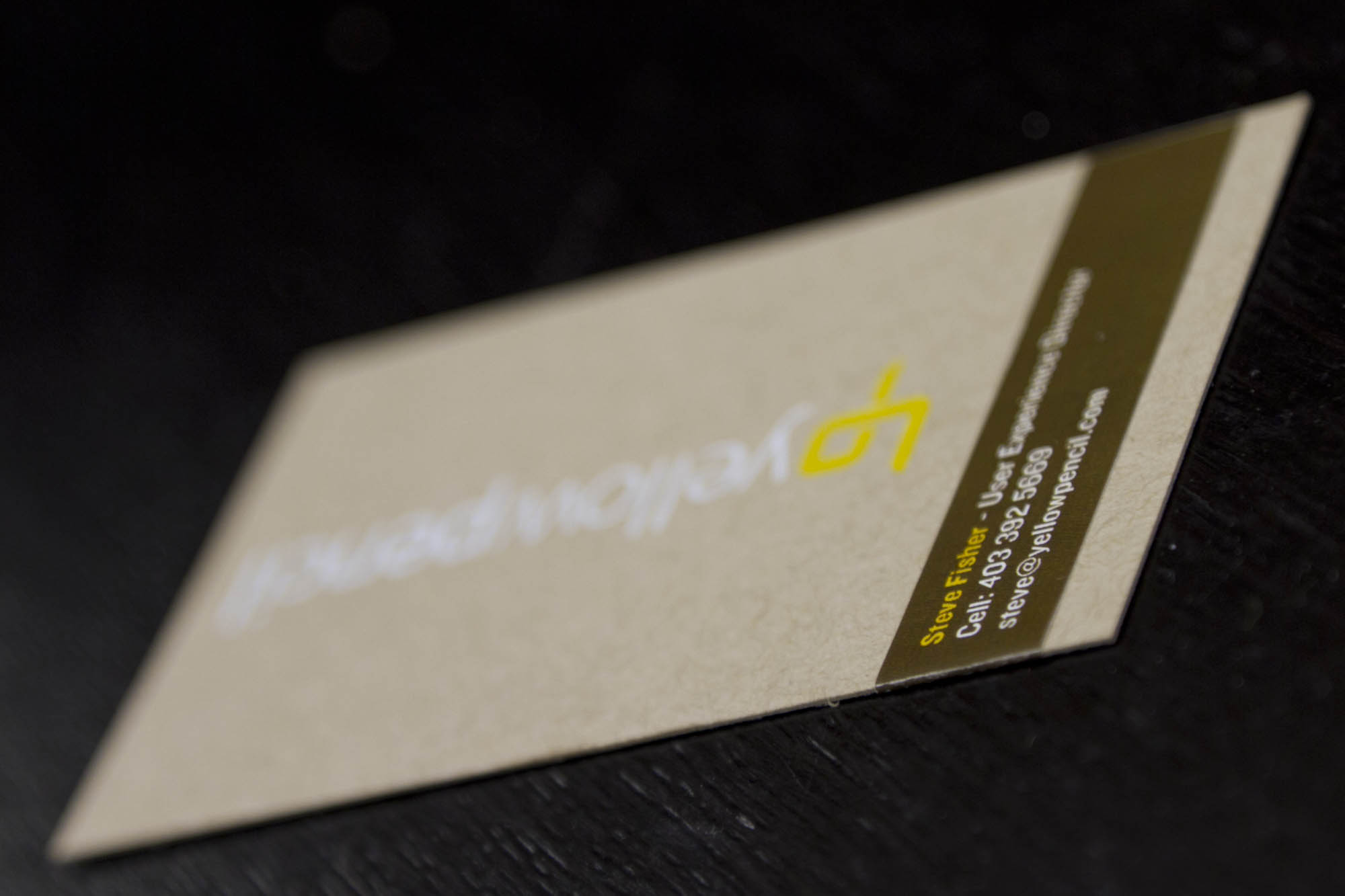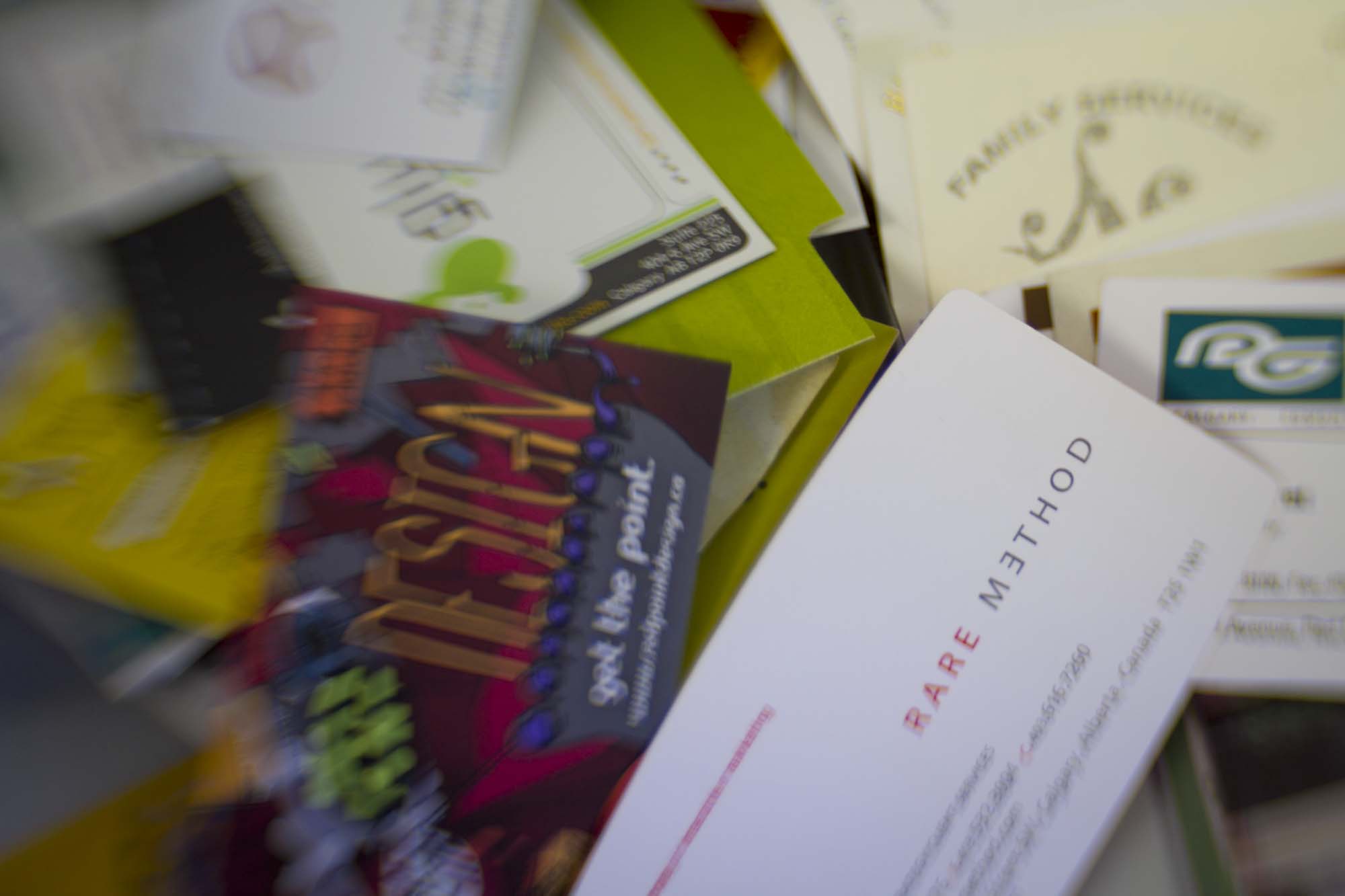In this age of social media, apps, click ads and online networks, a once immovable bulwark of business is slowly disappearing–the business card. In the “olden days” the mighty rolodex would sit on the office manager or salesperson’s desk–the all-powerful gatekeeper to leads, key contacts and everything to keep the greasy wheels of a post war boom running (but they date back to the 17th century). Are business cards still relevant?
Wikipedia describes a business card as:
Business cards are cards bearing business information about a company or individual. They are shared during formal introductions as a convenience and a memory aid. A business card typically includes the giver’s name, company affiliation (usually with a logo) and contact information such as street addresses, telephone number(s), fax number, e-mail addresses and website. It can also include telex, bank account, tax code. Traditionally many cards were simple black text on white stock; today a professional business card will sometimes include one or more aspects of striking visual design.
Yep. And all of that is now easily accessible online.
Business cards have been shared “as a convenience and a memory aid” – that sounds terrific! Being forgetful, I need all the memory aids I can get! But wait… there’s google. I no longer need a brain, let alone a memory, or need to cut trees down to print business cards. Now that we have online maps, business profiles and SEO, aren’t business cards obsolete? Yes… sort of.
We print a mountain of business cards – people still need business cards for introductions – that is clear. People want business cards. The real shift is that people don’t really need business cards. What’s changed then, is that people need far less business cards than they used to. A typical order for cards might look like this:
- Bill x 1,500 (the boss gets lots)
- Jane x 1,500 (sales gets lots)
- Bill x 1,000
- Fred x 750
- Barney x 500
- Edna x 500
- Frank x 500
- etc. etc.
- Total = $$$$$
Now, with more and more people doing business over email, LinkedIn or twitter, most of these people don’t need cards. Today, this same group orders this:
- John x 250
- Jane x 500
- Fred x 100
- Blank x 500
- Total = $$

In the end I doubt business cards will truly die. Ask any print shop that runs thousands of cards per week and they can tell you that. They are a social convention within business, just like shaking hands in the west, and bowing in Asia. Business cards remain and will remain a social convention for the foreseeable future. But designers have a short time to re-define the business card to make them efficient and relevant to newer, younger industries defying convention. Innovative applications & production techniques will result in new uses and will save this once mighty little bit of paper. The next time you look at your card though, think about hanging onto it. You may want it for a scrapbook to look back on the “olden days”.


I have had to throw out countless cards and this is within a business model where my staff see 4-8 new people a day! I love this article, it is completely bang on! Good job Brian!
One interesting idea I stumbled upon recently is putting a QR code on a business card. The about.me website essentially gives out one pack of cards (unsure as to size or quality, and its free only if you allow some advertising) with a QR code to point to your page on about.me, which is an awesome idea. You still need to pay S&H, but this allows merging of the old habits with the newer technologies in a good way, in my opinion.
It’s been years since I was in Japan, but I recall during the trip that we were instructed on the ritual around the exchange of business cards – taking it with two hands as a sign of respect, etc. I hope that kind of thing sticks around – not sure the Bump app will lend itself to that kind of gravitas. Love those YP cards…simple and elegant.
Exactly. Societies don’t often stop doing things that “feel right” and aren’t directly harmful. But if we do things smarter… then we at least improve on the convention. I love that YP card. Brilliant idea.
Nice write-up sir! Appreciate the kind words about our business card project at Yellow Pencil.
I agree that business cards are less of an ideal solution today than they were even 5 years ago, but you’re right to say that they aren’t completely going away anytime soon. Still something about giving out a card that feels right even if it might not be the best solution anymore.